GrabCAD

Reuleaux Triangle NASA CHAMP v1.0 and v2.0 (latest)
by GrabCAD
Last crawled date: 1 year, 11 months ago
DESIGN DESCRIPTION
The Reuleaux Triangle NASA CHAMP is a design concept for the NASA Handrail Clamp Assembly Challenge.
After careful considerations and a feasibility study I am proposing the use of a curve of constant width as a Reuleaux Triangle interior shape to constrain the movement of the CHAMP while rotating around the handrail 90 degrees to final locked position. (http://en.wikipedia.org/wiki/Reuleaux_triangle)
VERSION 1.0:
Please refer to PDF file: NASA CHAMP DESCRIPTION V2.0
VERSION 2.0:
Please refer to PDF file: NASA CHAMP DESCRIPTION V2.0
The design concept is trying to solve the following three main considerations:
ONE
The CHAMP has to be a complementary device and an alternative to the existing Handrail Clamp Assembly (HCA):
The proposed RT NASA CHAMP has the following same attributes as the existing HCA:
One piece only.
One latch with locked and unlocked position.
The latching mechanism is placed opposite-to-opening and positioned at the side of the clamp.
The seat track interface is aligned centerline with the curved part of the handrail.
Do not need to detach stud fastener for handrail decoupling.
Comply with the standard commercial airlines track MS33601.
The bonus additional characteristics:
One handed installation and removal from the handrail. The Reuleaux Triangle interior shape creates a constrained movement that “holds” the CHAMP in place while it is been mounted/dismounted to/from the handrail. It will allow the astronaut to use one hand to connect/disconnect the CHAMP and the other hand to support themselves (applying a kick load) in a zero gravity environment.
The RT NASA CHAMP is a 2-inch length modular size. It can be mounted next to each other to provide a longer standard track interface with functional connection points.
The proposed design is using a similar to the HCA opposite-to-opening locking mechanism. The decision is made to better align the CHAMP geometry to the maximum compression loads from mechanical properties of the ABS material made by FDM. The latch will apply compression loads towards the opening to the flat segment of the handrail. The 90-degree final locked position will prevent the handrail to disengage or disconnect. While applying compression loads towards the opening, the closed latch will also apply compression loads towards the interior of the “C” shape (to the hinge). That will generate symmetric perpendicular loads (up and down) that will try to close the “C” shape and grab the handrail at the curved sides.
TWO
The CHAMP has to provide at least the same or a better user experience than the existing Handrail Clamp Assembly (HCA):
The user experience for the HCA clamp is simple and at least it should remain like that with the CHAMP. The RT NASA CHAMP has only to parts that will be printed at the same time. The two parts will be assembled only once to become a single element (equivalent to the existing HCA). The consideration is made to reduce Bio-Cost (http://www.dubberly.com/articles/bio-cost.html and https://vimeo.com/album/1654007) and the implications for astronauts while assembling the object for every use. If there is more than one part to the product, the risk of misplacing the parts will be doubled with any additional separate part/s.
The RT NASA CHAMP has a one-handed use characteristic: User manipulation without the need to remove the mounted object to connect or disconnect the clamp from the handrail.
THREE
The CHAMP has to comply with every regulation mentioned within the NASA Handrail Clamp Assembly Challenge board:
Please refer to PDF file: NASA CHAMP DESCRIPTION V2.0
The Reuleaux Triangle NASA CHAMP is a design concept for the NASA Handrail Clamp Assembly Challenge.
After careful considerations and a feasibility study I am proposing the use of a curve of constant width as a Reuleaux Triangle interior shape to constrain the movement of the CHAMP while rotating around the handrail 90 degrees to final locked position. (http://en.wikipedia.org/wiki/Reuleaux_triangle)
VERSION 1.0:
Please refer to PDF file: NASA CHAMP DESCRIPTION V2.0
VERSION 2.0:
Please refer to PDF file: NASA CHAMP DESCRIPTION V2.0
The design concept is trying to solve the following three main considerations:
ONE
The CHAMP has to be a complementary device and an alternative to the existing Handrail Clamp Assembly (HCA):
The proposed RT NASA CHAMP has the following same attributes as the existing HCA:
One piece only.
One latch with locked and unlocked position.
The latching mechanism is placed opposite-to-opening and positioned at the side of the clamp.
The seat track interface is aligned centerline with the curved part of the handrail.
Do not need to detach stud fastener for handrail decoupling.
Comply with the standard commercial airlines track MS33601.
The bonus additional characteristics:
One handed installation and removal from the handrail. The Reuleaux Triangle interior shape creates a constrained movement that “holds” the CHAMP in place while it is been mounted/dismounted to/from the handrail. It will allow the astronaut to use one hand to connect/disconnect the CHAMP and the other hand to support themselves (applying a kick load) in a zero gravity environment.
The RT NASA CHAMP is a 2-inch length modular size. It can be mounted next to each other to provide a longer standard track interface with functional connection points.
The proposed design is using a similar to the HCA opposite-to-opening locking mechanism. The decision is made to better align the CHAMP geometry to the maximum compression loads from mechanical properties of the ABS material made by FDM. The latch will apply compression loads towards the opening to the flat segment of the handrail. The 90-degree final locked position will prevent the handrail to disengage or disconnect. While applying compression loads towards the opening, the closed latch will also apply compression loads towards the interior of the “C” shape (to the hinge). That will generate symmetric perpendicular loads (up and down) that will try to close the “C” shape and grab the handrail at the curved sides.
TWO
The CHAMP has to provide at least the same or a better user experience than the existing Handrail Clamp Assembly (HCA):
The user experience for the HCA clamp is simple and at least it should remain like that with the CHAMP. The RT NASA CHAMP has only to parts that will be printed at the same time. The two parts will be assembled only once to become a single element (equivalent to the existing HCA). The consideration is made to reduce Bio-Cost (http://www.dubberly.com/articles/bio-cost.html and https://vimeo.com/album/1654007) and the implications for astronauts while assembling the object for every use. If there is more than one part to the product, the risk of misplacing the parts will be doubled with any additional separate part/s.
The RT NASA CHAMP has a one-handed use characteristic: User manipulation without the need to remove the mounted object to connect or disconnect the clamp from the handrail.
THREE
The CHAMP has to comply with every regulation mentioned within the NASA Handrail Clamp Assembly Challenge board:
Please refer to PDF file: NASA CHAMP DESCRIPTION V2.0
Similar models
grabcad
free

Nasa hand rail clamp assembly
...sed by astronauts on iss to provide rigid mounting locations required in a microgravity environment for normal daily operations.
grabcad
free

CHAMP-X3 NASA Handrail Clamp
...champ-x3 nasa handrail clamp
grabcad
handrail clamp with a cam-lock- 1/4 turn fastener.
grabcad
free

NASA Handrail Clamp
...orm a clamp for the handrail. the interlocking sections will produce a strong clamping when tightened using the bolt and the nut.
grabcad
free

CHAMP 3 - NASA Handrail Clamp
...t within the build envelope in the orientation shown in the attached pictures. the print has a total volume of 2.29 cubic inches.
grabcad
free

CHAMP QR
.... measures 73420.47 cubic millimeters in volume.
6. self driving locating and locking mechanism, just push and lock in position.
grabcad
free

NASA handrail clamp
...assembly parts are not loose. clamp is possible to operate by one hand. clamps fastening force by eccentric pivot axle of handle.
grabcad
free

Champ-X2 NASA handrail clamp
... to spring load onto the handrail when fastened.
updated video:
https://www.youtube.com/watch?v=ld5b7xip6y4&feature=youtu.be
grabcad
free

NASA CHALLENGE - HANDRAIL CLAMP ASSEMBLY
...and proved satisfactory in tests on actual printed assemblies. similary, the latch spring thickness was determined during tests. these...
grabcad
free

NASA Handrail Clamp Assembly Challenge entry 02
...s/nasa-handrail-clamp-assembly-challenge
3rd entry https://grabcad.com/library/nasa-handrail-clamp-assembly-challenge-entry-03-1
grabcad
free

NASA CHAMP - Ratchet Clamp
... turn disengages the "teeth".
clamp is printed in one piece therefore no need for printing multiple parts or assembly.
Reuleaux
thingiverse
free

Reuleaux triangle
...reuleaux triangle
thingiverse
just a normal reuleaux triangle/
thingiverse
free

Reuleaux Tetrahedrons by joeytk7
...leaux tetrahedrons by joeytk7
thingiverse
this is a reuleaux tetrahedron.this means it is a tetrahedron with a consistent width.
thingiverse
free

Reuleaux Tetrahedron by PeterShook
... by petershook
thingiverse
a reuleaux tetrahedron is the intersection of four spheres centered at the vertices of a tetrahedron.
thingiverse
free

Reuleaux Car by townmath
...based on something i saw on twitter. reuleaux triangles are constant width shapes than can act as circles in certain situations.
thingiverse
free

Reuleaux TPUcase RX200 by dergringo
...reuleaux tpucase rx200 by dergringo
thingiverse
reuleaux tpucase
thingiverse
free

Reuleaux tetrahedron by Nicnicnic777
...on by nicnicnic777
thingiverse
this is a reuleaux tetrahedron size 30x30x30. it is a solid with almost constant width.
have fun!
thingiverse
free

Wismec reuleaux charger by Voodoobrew
...
center of of usb port is 10.5cm above base.
this is a loose remix, used the source for a cutout, which made my life much easier.
thingiverse
free

Reuleaux Polygon by pseudoeuclidean
...osite the side being replaced (notice that the sides of a polygon with an even number of sides does not have an opposite vertex).
thingiverse
free

Parametric Reuleaux Tetrahedron by JeremyBP
...euleaux tetrahedron by jeremybp
thingiverse
the reuleaux tetrahedron is a pretty cool shape. it's a solid of constant width.
thingiverse
free

Reuleaux TPU FULLcase RX200 by dergringo
...reuleaux tpu fullcase rx200 by dergringo
thingiverse
reuleaux tpu fullcase rx200
Champ
3ddd
$2

Interna Champs-Elysees Bois
...-elysees bois
размеры:
480х630х1060мм
*max2012+, *fbx, *objhttp://www.interna.it/en/champs-elysees-bois/128/prdd.php
3ddd
$1

BAKER CHAMPS DE MARS ARMCHAIR
...baker champs de mars armchair
3ddd
baker
стул baker champs de mars
3d_export
$79

Champ Car 3D Model
...s us atlantic racing vehicle
champ car 3d model download .c4d .max .obj .fbx .ma .lwo .3ds .3dm .stl digitallab3d 106544 3dexport
turbosquid
$99

Trepel CHAMP 350 06
...d model trepel champ 350 06 for download as max, obj, and fbx on turbosquid: 3d models for games, architecture, videos. (1475979)
turbosquid
$15

Interna Champs-Elysees Bois
... available on turbo squid, the world's leading provider of digital 3d models for visualization, films, television, and games.
3d_export
$20

Samsung C3330 Champ 2 3D Model
... jsm touchscreen tablet detailed vray smartphone cg mobile android cellular
samsung c3330 champ 2 3d model cgozzie 80775 3dexport
turbosquid
$15

Samsung C3262 Champ Neo DUOS
... available on turbo squid, the world's leading provider of digital 3d models for visualization, films, television, and games.
turbosquid
$20

Center Line Champ XL Series Wheels
... available on turbo squid, the world's leading provider of digital 3d models for visualization, films, television, and games.
3d_export
$79

2006 Champ Shell-Miller Team 3D Model
...v8 v6 v12
2006 champ shell-miller team 3d model download .c4d .max .obj .fbx .ma .lwo .3ds .3dm .stl digitallab3d 106546 3dexport
3d_export
$79

2006 Champ Car CDW-RuSport Team 3D Model
...ya lwo
2006 champ car cdw-rusport team 3d model download .c4d .max .obj .fbx .ma .lwo .3ds .3dm .stl digitallab3d 106543 3dexport
Nasa
turbosquid
$49

Nasa Marscopter
...id
royalty free 3d model nasa marscopter for download as max on turbosquid: 3d models for games, architecture, videos. (1323349)
turbosquid
$500
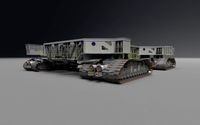
NASA Crawler
... available on turbo squid, the world's leading provider of digital 3d models for visualization, films, television, and games.
turbosquid
$5

Nasa Rocket
... available on turbo squid, the world's leading provider of digital 3d models for visualization, films, television, and games.
turbosquid
$1

NASA Spool.max
... available on turbo squid, the world's leading provider of digital 3d models for visualization, films, television, and games.
3d_export
$15

US NASA 3D Model
...us nasa 3d model
3dexport
spaceship ship nasa battle blender
us nasa 3d model antonielfelain 96625 3dexport
turbosquid
$99
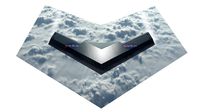
NASA MIT Wing
...oyalty free 3d model nasa mit wing for download as ma and max on turbosquid: 3d models for games, architecture, videos. (1510099)
turbosquid
$29
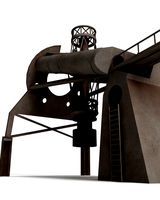
NASA Electronic Telescope
... available on turbo squid, the world's leading provider of digital 3d models for visualization, films, television, and games.
turbosquid
$6

Real flag NASA
... available on turbo squid, the world's leading provider of digital 3d models for visualization, films, television, and games.
3d_export
$41

NASA FAST Satellite 3D Model
...odel
3dexport
nasa space satellite earth aurora sensor panel solar orbit
nasa fast satellite 3d model visualmotion 20244 3dexport
3d_export
$20

22k photorealistic earth - nasa
...tures directly from nasa.<br>nasa solar system bundle coming soon!<br>contact info@teichmanmedia.eu for all iquiries.
Latest
3d_export
$20

The latest product 3D Model
...the latest product 3d model
3dexport
the latest product 3d model rian_sevcnot58859 97067 3dexport
turbosquid
$31

Latest Shoes Diamond Pendent
...odel latest shoes diamond pendent for download as 3dm and stl on turbosquid: 3d models for games, architecture, videos. (1597332)
turbosquid
$8

Latest diamond Ring
...squid
royalty free 3d model ring for download as 3dm and stl on turbosquid: 3d models for games, architecture, videos. (1564652)
3d_export
$20

The latest product overload trailer 3D Model
... latest product overload trailer 3d model
3dexport
the latest product overload trailer 3d model rian_sevcnot58859 97066 3dexport
3d_export
$99

Fiat 500 latest 60 3D Model
...0 latest 60 3d model
3dexport
fiat 500 vintage cars oldtimes italy design italian
fiat 500 latest 60 3d model dr3x 81642 3dexport
3d_export
$27

the latest automatic n95 mask machine production line drawings
...trasonic heat sealing system. the whole machine has stable performance, high production efficiency and high degree of automation.
3d_export
$10

airbourne
...airbourne 3dexport kmg's latest design! well done kmg such a beautiful...
3ddd
free

The plants
...the plants 3ddd цветок , горшок , скамейка the latest ikea collection from plants with high resolution...
3d_export
$10

vampire bat
...vampire bat 3dexport sharing my latest vampire-based work. vampire bat 3d model. include: fbx +...
3d_ocean
$39

The Plants
...flower green ikea interior leaves natural plant tropical the latest ikea collection from plants with high resolution...
V1
turbosquid
$35

v1
... available on turbo squid, the world's leading provider of digital 3d models for visualization, films, television, and games.
3d_export
$10

street tree v1
...street tree v1
3dexport
street tree v1
3d_export
$5

potato v1
...potato v1
3dexport
turbosquid
$20

Kitchen V1
...bosquid
royalty free 3d model kitchen v1 for download as max on turbosquid: 3d models for games, architecture, videos. (1153622)
turbosquid
$12
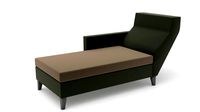
sofa v1
...turbosquid
royalty free 3d model sofa v1 for download as max on turbosquid: 3d models for games, architecture, videos. (1283267)
turbosquid
$3

Chair V1
...urbosquid
royalty free 3d model chair v1 for download as fbx on turbosquid: 3d models for games, architecture, videos. (1486093)
turbosquid
$15

Cupboard v1
...royalty free 3d model cupboard v1 for download as max and fbx on turbosquid: 3d models for games, architecture, videos. (1444568)
3d_export
$5

tram v1
...tram v1
3dexport
3d_export
$8

lumber car v1
...lumber car v1
3dexport
lumber car v1 printable, low poly model.
turbosquid
$20

DELTALIGHT v1
...free 3d model deltalight v1 for download as max, max, and obj on turbosquid: 3d models for games, architecture, videos. (1630928)
Triangle
3ddd
$1

Тумба Triangle
...тумба triangle
3ddd
тумба , triangle
тумба в современном стиле triangle
3ddd
$1

Triangled posters
...triangled posters
3ddd
постер
triangled posters collection
3ddd
$1

Carpet Triangle
...carpet triangle
3ddd
ковер
carpet triangle, ковер , узоры, треугольник
design_connected
free

Triangle Table
...triangle table
designconnected
free 3d model of triangle table by atelier areti designed by kerschbaumer, gwendolyn.
turbosquid
$2

triangle sign
...quid
royalty free 3d model triangle sign for download as fbx on turbosquid: 3d models for games, architecture, videos. (1421072)
turbosquid
$1

Triangle Signal
...id
royalty free 3d model triangle signal for download as fbx on turbosquid: 3d models for games, architecture, videos. (1162930)
3d_export
$5

impossible triangle
... and materials.<br>https://www.shutterstock.com/video/clip-1057067141-3d-animation-impossible-triangle-that-assembled-cubes
3d_export
$5

triangle house
...triangle house
3dexport
living in a house that is happy
turbosquid
$35

Triangle Hanger
... available on turbo squid, the world's leading provider of digital 3d models for visualization, films, television, and games.
turbosquid
$15

Dinner Triangle
... available on turbo squid, the world's leading provider of digital 3d models for visualization, films, television, and games.
V2
3d_export
free
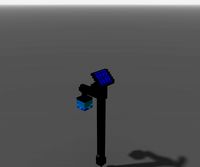
Lamp v2
...lamp v2
3dexport
lamp v2 with solar panel
3d_export
$5

hammerhead v2
...hammerhead v2
3dexport
razer hammerhead v2 headphones, modeled in cinema 4d, render in corona
3d_export
$5

manometer v2
...manometer v2
3dexport
3d_export
$5

potato v2
...potato v2
3dexport
turbosquid
$52
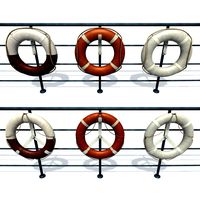
Lifebuoys v2
...squid
royalty free 3d model lifebuoys v2 for download as fbx on turbosquid: 3d models for games, architecture, videos. (1560870)
turbosquid
$2

Mask v2
...turbosquid
royalty free 3d model mask v2 for download as stl on turbosquid: 3d models for games, architecture, videos. (1527741)
turbosquid
free
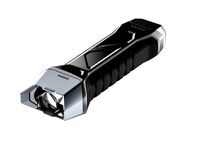
Flashlight V2
...d
free 3d model flashlight v2 for download as , obj, and fbx on turbosquid: 3d models for games, architecture, videos. (1663559)
turbosquid
$29

Thanos v2
...
royalty free 3d model thanos v2 for download as ztl and obj on turbosquid: 3d models for games, architecture, videos. (1651077)
turbosquid
$29

Titan v2
...d
royalty free 3d model titan v2 for download as ztl and obj on turbosquid: 3d models for games, architecture, videos. (1540228)
turbosquid
$29
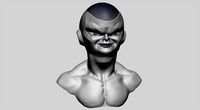
Frieza v2
...
royalty free 3d model frieza v2 for download as ztl and obj on turbosquid: 3d models for games, architecture, videos. (1701238)
0
turbosquid
$12

Calligraphic Digit 0 Number 0
...hic digit 0 number 0 for download as max, obj, fbx, and blend on turbosquid: 3d models for games, architecture, videos. (1389318)
3d_export
$6
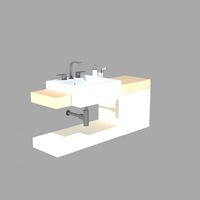
set-0
...set-0
3dexport
turbosquid
$6

hedge 0
...yalty free 3d model hedge 0 for download as max, obj, and fbx on turbosquid: 3d models for games, architecture, videos. (1450353)
turbosquid
$5

Nuber 0
...oyalty free 3d model nuber 0 for download as ma, obj, and fbx on turbosquid: 3d models for games, architecture, videos. (1564674)
turbosquid
$22

0.jpg
... available on turbo squid, the world's leading provider of digital 3d models for visualization, films, television, and games.
turbosquid
free

Steam Locomotive Fowler 4F 0-6-0
... available on turbo squid, the world's leading provider of digital 3d models for visualization, films, television, and games.
turbosquid
$10

Liquid Number 0
... model liquid number 0 for download as c4d, 3ds, fbx, and obj on turbosquid: 3d models for games, architecture, videos. (1689919)
turbosquid
$45

Dragon360_perspShape_tmp.0.jpg
... available on turbo squid, the world's leading provider of digital 3d models for visualization, films, television, and games.
turbosquid
$8

Rocks Debris 0
... available on turbo squid, the world's leading provider of digital 3d models for visualization, films, television, and games.
3d_export
$18
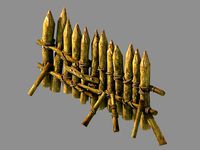
wood-guardrail-fence 0
...wood-guardrail-fence 0
3dexport
wood-guardrail-fence 0<br>3ds max 2015
